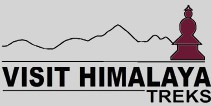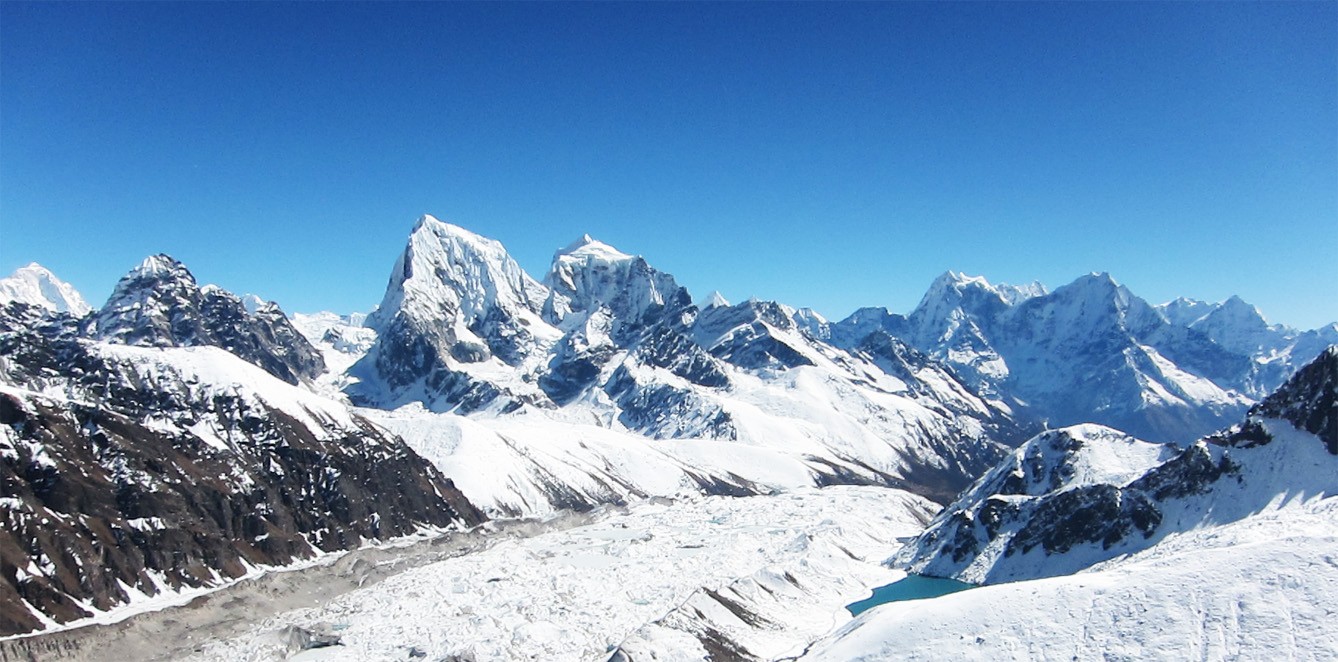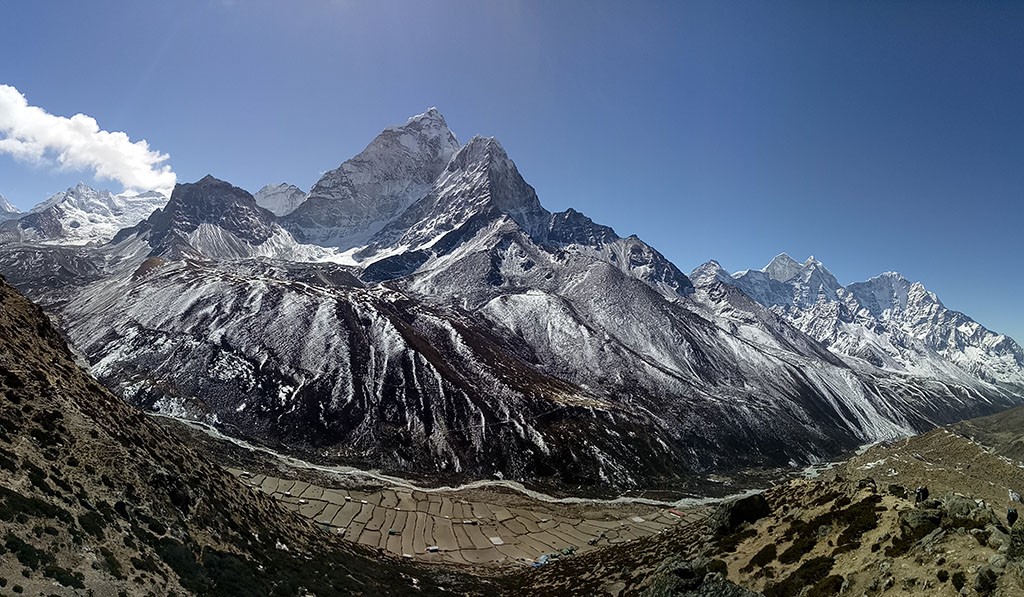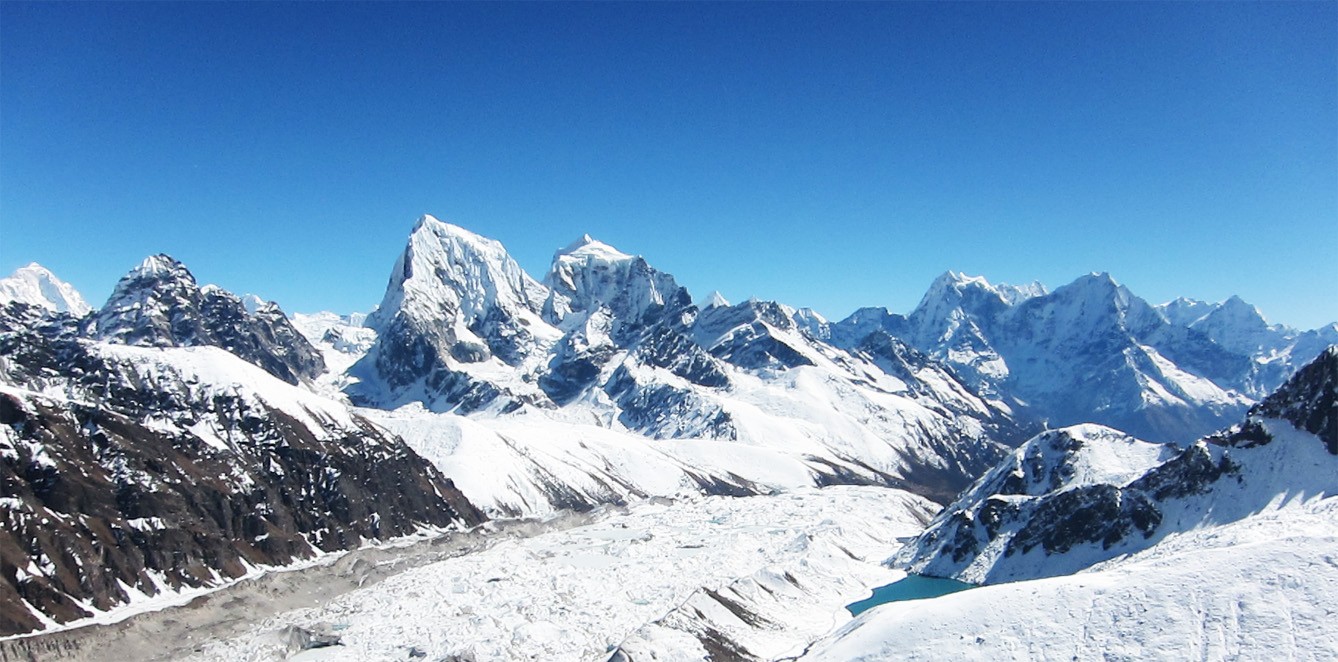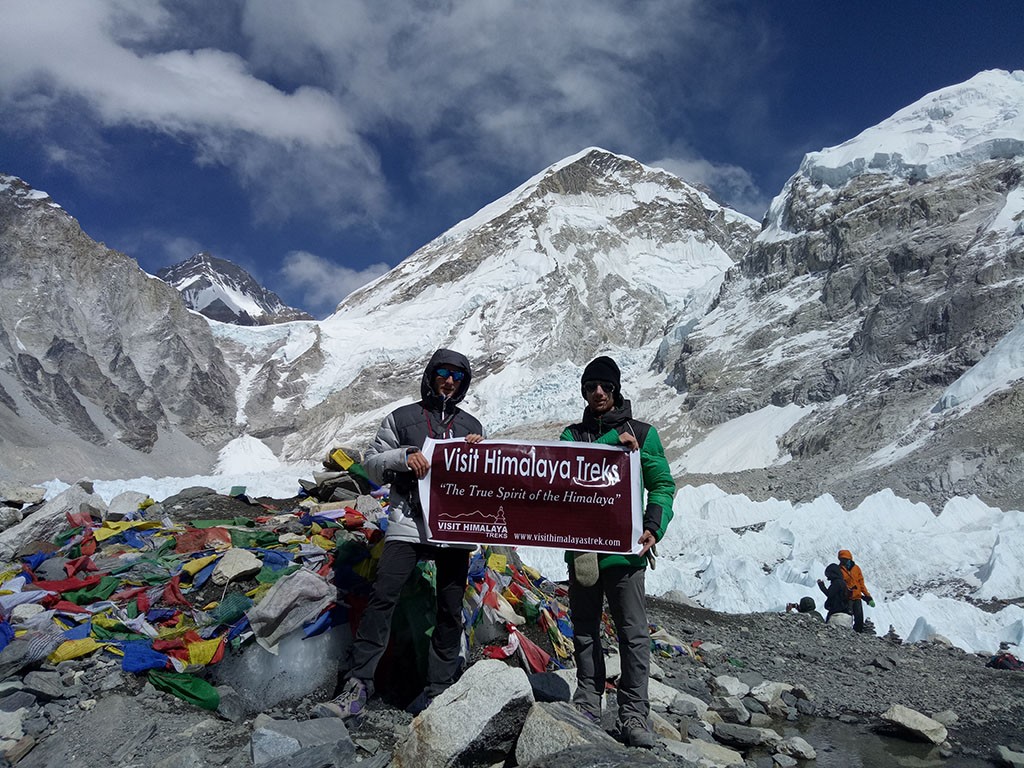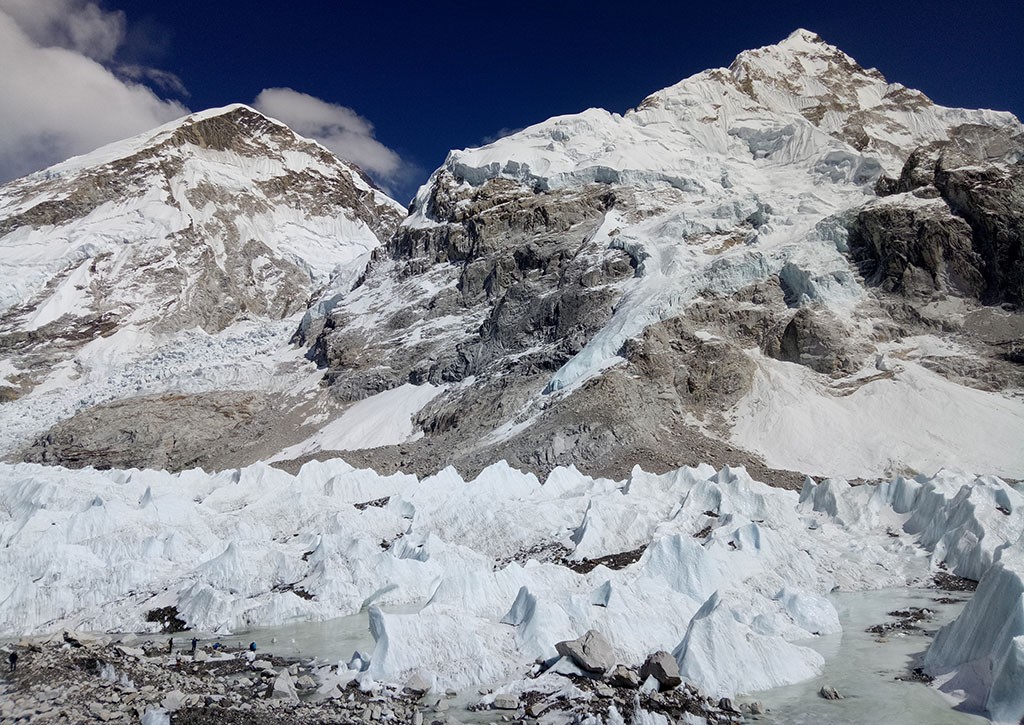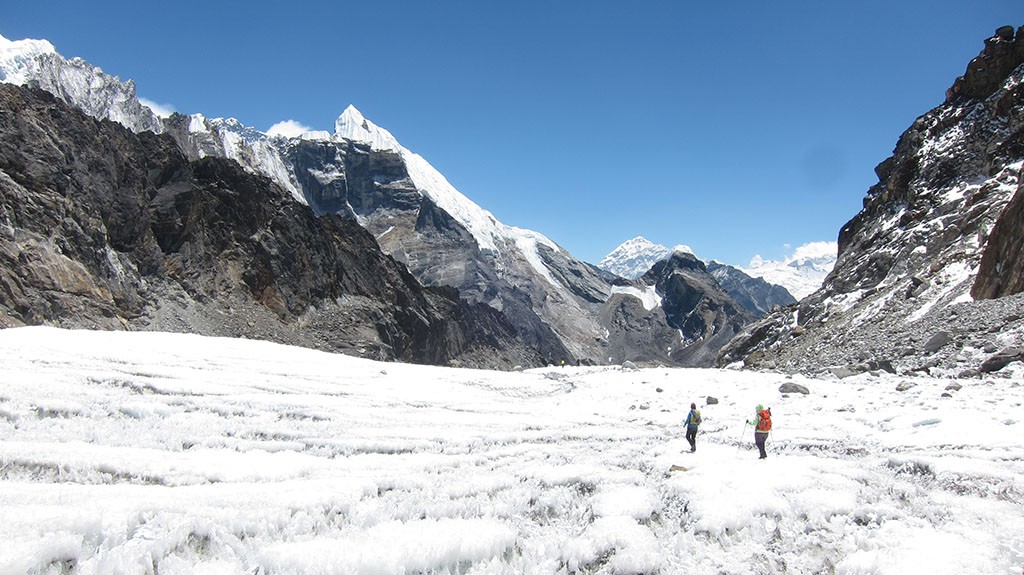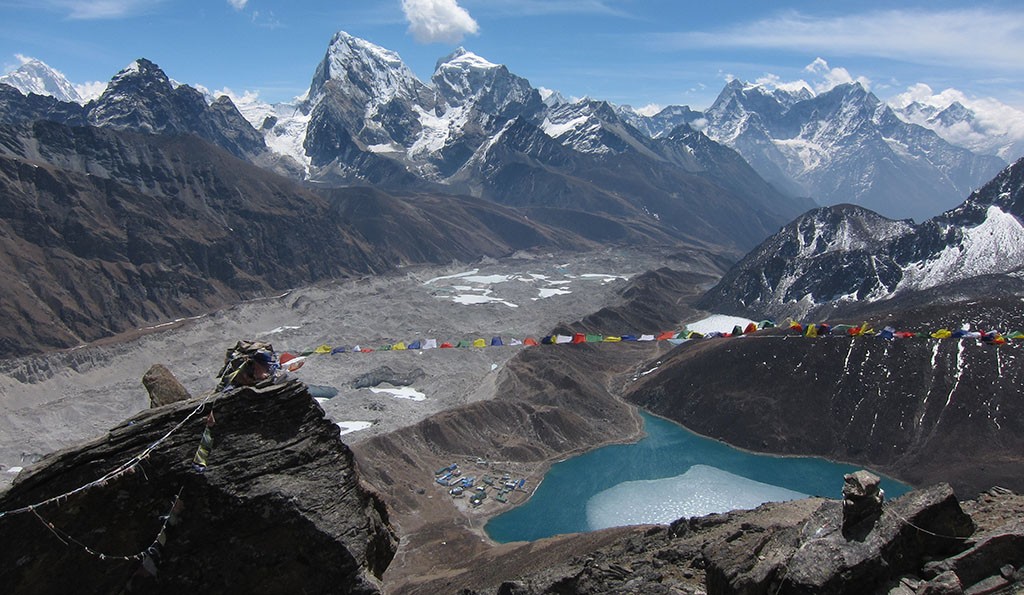Everest Base Camp Chola Pass Gokyo Trek is an uneven and adventurous alternative to the Regular Everest Base Camp Trek. You get the best of both worlds: a wilderness experience, plus alternate attractions of the classic Everest Base Camp Trek.
Highlights of the Everest Base Camp Chola Pass Gokyo Trek
- Enjoy the classic Everest Base Camp Chola Pass Trek while adding extra attractions to the experience.
- Feel the sense of achievement after passing the high Chola (Pass).
- Marvel at the highest freshwater lake system in the world, the Gokyo Lakes.
- Be amazed by unobstructed views of Everest, Lhotse, and Cho Oyu.
This route avoids many of the busy paths, which can get very crowded in peak season, and explores the higher valleys of the Khumbu region. In the Gokyo Valley trek, the Gokyo Lakes are a major attraction in themselves, with their pristine turquoise waters. The views of Cho Oyu, Everest, Lhotse, Makalu, and the Everest Massif from Gokyo-Ri, a peak above the lakes, are also some of the best in the Khumbu region.
While parts of this trek are demanding (especially the Chola pass at 5330m), there is also more time to acclimatize to the altitude. There will also be fewer nights spent at very high altitudes than on the standard Everest Base Camp Trek. This means you will likely feel more physically prepared for the challenges of the trail.
EBC Chola Pass Gokyo Lakes Trek Route,
Everest Base Camp Chola Pass Trek starts with an exciting flight from Kathmandu to Lukla, the gateway to Mt. Everest. While this airport is notorious, you will probably forget any fears amid the excitement of the approach and the Spectacular Mountain and hill scenery. After two days walk to Namche Bazaar, the heartland of Sherpa culture, the trail turns off from the Gokyo Valley trek route and enters the famous Everest Base Camp Trek.
Spend a day at Dingboche (4220m) to aid acclimatization. This day can be used to hike up to Nagarjuna Viewpoint or an optional walk to Chhukung Valley. The trail continues down the valley, towards the beautiful view of the massive towering peak from the trekking trail to the Everest base camp trek.
As you climb in altitude, the views of the mountains become more impressive. Stop at small towns along the way, such as Tengboche, with its famous monastery where Everest climbers stop to be blessed by the head lama. You will also pass many strings of colorful prayer flags fluttering in the wind, sending mantras through the air, as well as carved mani stones with Tibetan mantras carved on them, and prayer wheels you can spin.
Gorakshep (5164m) is the highest point on the trek at which you will sleep. From here, the trek to Base Camp itself, and up Kala Patthar (5545m), for views of Everest, Lhotse (8516m), Pumo-Ri (7161m), Thamserku (6623m), Kangtega (6782m), Kangtega (6782m), AmaDablam (6812m) one of the beautiful mountain in the world.
Letter on you turned to the right after walking 30 minutes from Lobuche leaving the popular trekking trail of Everest Base camp Trek Behind and reach Dzhong-La, a tiny place with only a couple of lodges and the only village between Cho La and Lobuche. After crossing the Chola, head up the Gokyo Valley trek and stay at Gokyo, situated on the third lake among the five major lakes that comprise the Gokyo Lakes area.
Gokyo Valley Trek.
There are 19 lakes in the system, although there are Five main lakes accessible to visitors. The main lake is called Dudh Pokhari (the milk lake), and the town of Gokyo sits on its shore. A couple of hours’ hike above the lakes is Gokyo-Ri (5360m), which is actually at about the same altitude as Everest Base Camp. The viewpoint at the summit provides one of the best views in the region, including Everest (8848m), Lhotse (8516m), and Cho Oyu (8201m), three of the top ten highest mountains in the world.
From there you can also see the longest Ngozumpa Glacier in Nepal. After this viewpoint, the route goes down to the main Everest Base camp trail at Kyangjuma (3700). The return route to Lukla descends into the main valley and passes through Luza (3370m), Mong-La (4013m), and Namche (3440m).
Accommodation availability during the EBC Chola Pass Trek
Everest Base Camp Chola Pass Trek can be done as a tea-house trek, where you will stay in lodges along the way. Lukla, Namche Bazaar, and along the Everest Base Camp route, the variety and quality of tea houses are especially good. Luxury lodges are even available! We can match your lodging to your budget and tastes.
Lukla Flight Information.
Kathmandu Airport and the runways are shared by both domestic and international flights. Can be quite busy in the high tourism seasons, where Lukla flights will be in the peak time. To avoid the busy air traffic and landing on the runways can be a problem.
Completing the flights and making sure all travelers are in Lukla and Outing from Lukla on time. The Lukla Flight operates from Manthali (Ramechhap) Airport during the peak season. The months of October and November are in the autumn season and the months of March to May are in the Spring season Lukla flights operate from Manthali (Ramechhap Airport).
During this period (October and November in the autumn season and March to May in the Spring season) there is no flight available KTM – LUKLA and LUKLA – KTM.
During peak tourism season, October and November in the Autumn season and March to May in the Spring season Lukla flights operate only from Manthali (Ramechhap Airport).
Scenic Flight to Lukla Airport Full Information read here.
Everest Base Camp Chola Pass Gokyo Trek Itinerary;
Day 01: Arrive in Kathmandu. (1350 meters).
Day 02: Sightseeing and Trek Preparation.
Day 03: Fly to Lukla (2810 meters) and trek to Phakding. (2610 meters).
Day 04: Trek to Namche Bazaar. (3440 meters).
Day 05: Acclimatization Day at Namche Bazaar.
Day 06: Trek to Thyangboche. (3860 meters).
Day 07: Trek to Dingboche. (4400 meters).
Day 08: Acclimatization Day at Dingboche.
Day 09: Trek to Lobuche. (4900 meters).
Day 10: Trek to Gorakshep (5180 meters).
Day 11: Climb Kala Patter (5545 meters) and trek to Lobuche. (4900 meters).
Day 12: Trek to Dzong Lha. (4830 meters).
Day 13: Cross Cho La (5330 meters) and trek to Dragnag. (4700 meters).
Day 14: Trek to Gokyo Lake (4790 meters).
Day 15: Explore around Gokyo Valley.
Day 16: Trek to Luza. (3370 meters).
Day 17: Trek Phortse (2950 meters).
Day 18: Trek to Namche Bazaar. (3440 meters).
Day 19: Trek to Lukla. (2810 meters).
Day 20: Fly back to Kathmandu.
Day 21: Free day at Kathmandu.
Day 22: Final Departure to your Home Country.
